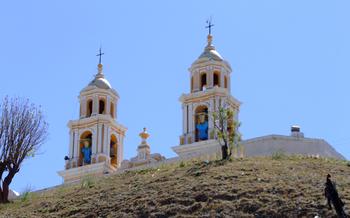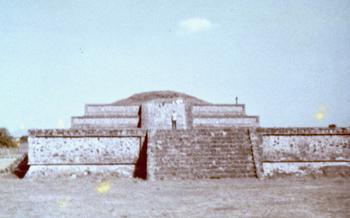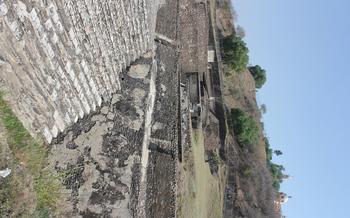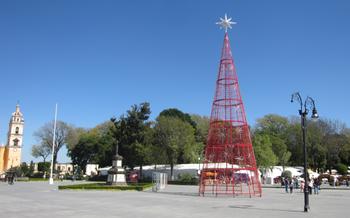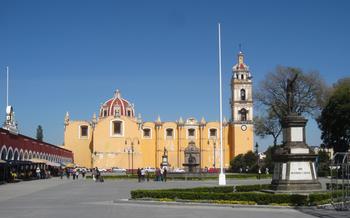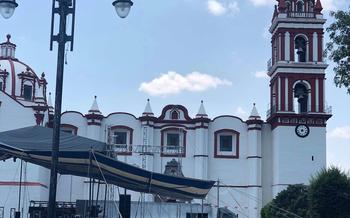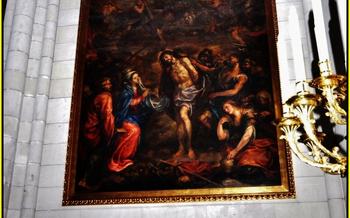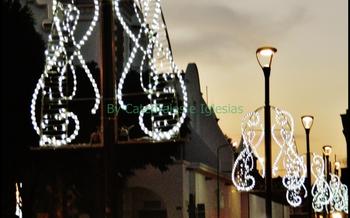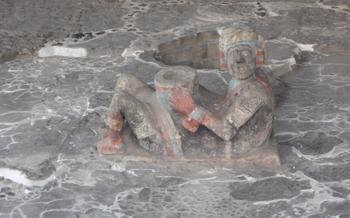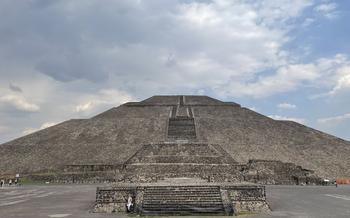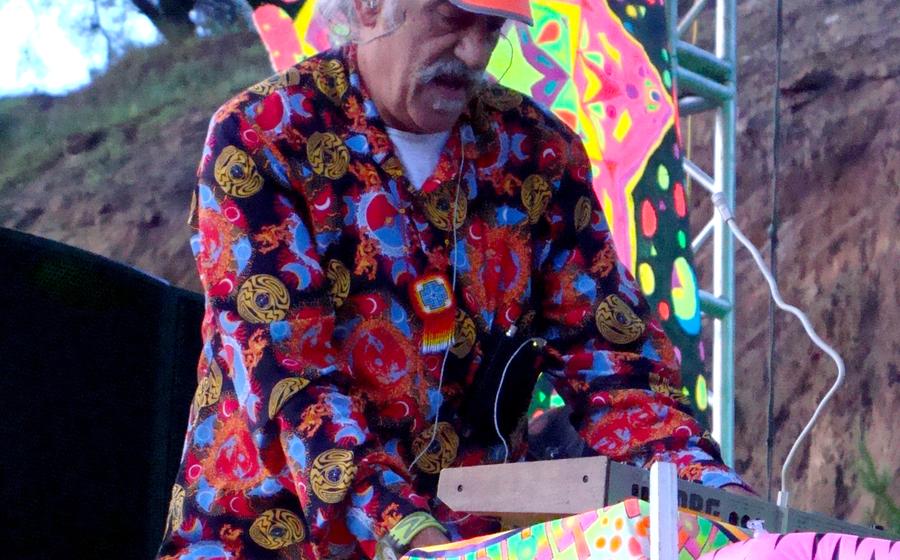
Cacaxtla Archaeological Site
- History of Cacaxtla Archaeological Site
- Location and Accessibility
- Unique Murals and Artwork
- The Great Plaza and Ceremonial Areas
- Residential and Elite Compounds
- The Sacred Cenote and Water Features
- Political and Economic Importance:
- Religious Beliefs and Rituals:
- Interactions with Other Civilizations:
- Archaeological Research and Discoveries
- Visiting Cacaxtla Archaeological Site: Practical Information for a Rewarding Experience
- Nearby Attractions and Activities
- Accommodation Options Near Cacaxtla
- Insider Tip: Exploring Beyond the Main Site
History of Cacaxtla Archaeological Site
The ruins of Cacaxtla, located in the state of Tlaxcala, Mexico, offer a glimpse into the rich history and cultural heritage of ancient Mesoamerica. This ancient city-state flourished between 650 and 900 AD, serving as a vital crossroads for trade and cultural exchange. Its strategic location along trade routes made it a significant player in regional politics and economics.
The Olmec-Xicallanco influence is evident in Cacaxtla's art and architecture, particularly in the exquisite murals that adorn the site's buildings. These murals depict scenes from mythology, daily life, and ritual ceremonies, providing valuable insights into the beliefs and practices of the ancient inhabitants.
Cacaxtla's downfall remains a mystery, but its ruins lay forgotten for centuries until their rediscovery in the 1970s. Subsequent archaeological excavations have unearthed a wealth of artifacts and structures, shedding light on the city's history and significance. Today, Cacaxtla stands as a testament to the artistry and ingenuity of the ancient Mesoamericans, attracting visitors from around the world to explore its hidden treasures.
Location and Accessibility
Cacaxtla, a site of great historical significance, is situated in the heart of Mexico, in the state of Tlaxcala. Strategically positioned in the eastern portion of the state, it lies within easy reach of several major cities and popular tourist destinations. The city of Tlaxcala, the state capital, is located approximately 30 kilometers to the east of the site, offering visitors a convenient base for their explorations. The city of Puebla, renowned for its colonial architecture and vibrant cultural scene, is also situated within close proximity, about 70 kilometers to the south.
Reaching Cacaxtla is a straightforward and accessible endeavor. Various transportation options are available, catering to the needs of travelers. For those seeking a comfortable and guided experience, organized tours departing from Mexico City, the nation's capital, or from the cities of Tlaxcala and Puebla are readily available. These tours often include transportation, knowledgeable guides, and comprehensive explanations of the site's history and significance.
For independent travelers, public transportation provides a budget-friendly alternative. Buses regularly depart from Tlaxcala and Puebla, offering a direct and convenient route to the archaeological site. Upon arrival at the site, visitors can embark on a self-guided tour, exploring the ruins at their own pace and immersing themselves in the history and culture of Cacaxtla. Local guides are also available at the site, offering insightful explanations and anecdotes to enhance the visitor's experience.
Unique Murals and Artwork
Cacaxtla is renowned for its exquisite and well-preserved murals, which adorn the walls of various structures throughout the site. These vibrant paintings showcase a diverse array of artistic styles and symbolism, providing a glimpse into the cultural and religious beliefs of the ancient Cacaxtla people.
The murals depict a variety of subjects, including mythological scenes, historical events, and everyday life. The most famous mural, known as the "Battle Mural," portrays a fierce conflict between two groups of warriors, each clad in elaborate costumes and wielding an array of weapons. The vivid colors and dynamic composition of this mural have captivated visitors for centuries.
The symbolism employed in the murals is complex and multifaceted, often drawing upon Mesoamerican mythology and cosmology. Many of the depicted figures represent deities, heroes, and other supernatural beings, while others symbolize natural elements, such as water, fire, and earth. The murals also provide insights into the social and political organization of Cacaxtla, as they depict scenes of rulers, priests, and other elites engaged in various ceremonies and rituals.
The creation of these murals was a collaborative effort involving skilled artists and artisans. The painters used a variety of techniques, including fresco, tempera, and secco, to create their masterpieces. The pigments were derived from natural sources, such as minerals, plants, and insects, and were applied to a layer of plaster that had been meticulously prepared to ensure the longevity of the paintings.
The murals at Cacaxtla have survived remarkably well over the centuries, despite being exposed to the elements and the passage of time. This is due in part to the dry climate of the region and the efforts of archaeologists and conservators who have worked tirelessly to protect and restore these priceless works of art.
The Great Plaza and Ceremonial Areas
The Great Plaza of Cacaxtla serves as the focal point of the archaeological site, showcasing the grandeur and intricate planning of the ancient city. This vast open space is enclosed by monumental structures, each playing a significant role in the religious and ceremonial life of the city-state.
At the heart of the plaza stands the Main Pyramid, an imposing structure that dominates the skyline. Constructed with precision and care, its towering height and sheer size inspire awe and reverence. This pyramid served as a temple for religious ceremonies, where offerings were made to the gods and prayers were whispered to the heavens.
Adjacent to the Main Pyramid, visitors can explore a series of ceremonial structures, each dedicated to specific rituals and deities. These structures vary in size and design, reflecting the diverse beliefs and practices of the ancient Cacaxtla people. Among these structures, the Temple of the Feathered Serpent stands out with its intricate carvings and vibrant murals, showcasing the artistic prowess and spiritual devotion of the city's inhabitants.
Ball courts, a common feature in Mesoamerican cultures, occupy a prominent position within the Great Plaza. These courts were not merely places for recreation but held deep ritual significance. The ancient game of ball, played with a solid rubber ball, was believed to have divine and cosmological associations. Players engaged in fierce competitions, representing the struggle between opposing forces in the universe.
Excavations in the ceremonial areas have unearthed a wealth of artifacts and offerings, shedding light on the religious practices and beliefs of the Cacaxtla people. These offerings include ceramic vessels, jade jewelry, obsidian tools, and precious stones, each holding symbolic meaning and reflecting the devotion of the ancient inhabitants.
Residential and Elite Compounds
A significant aspect of Cacaxtla's urban layout involves the residential areas and elite compounds that provide insights into the social organization and daily life of its inhabitants. The residential areas are characterized by clusters of small, rectangular dwellings arranged around courtyards. These residences likely housed extended families or clans, with each compound serving as a domestic unit.
Within these residential areas, archaeologists have uncovered evidence of domestic activities such as cooking, pottery-making, and textile production. This suggests a high level of self-sufficiency among the inhabitants, who engaged in various crafts and agricultural pursuits to meet their daily needs.
In contrast to the modest dwellings of the commoners, Cacaxtla also boasts several impressive palaces and elite compounds. These structures are larger in size and feature elaborate architectural details, indicating the status and power of their occupants. The palaces likely served as residences for the rulers and their families, as well as administrative centers for conducting political and economic affairs.
The presence of these elite compounds suggests a hierarchical social structure, with a ruling class that exercised authority over the rest of the population. This social stratification is further evidenced by the discovery of rich grave goods and luxury items within the elite burials, indicating the accumulation of wealth and power among the ruling elite.
The Sacred Cenote and Water Features
Water held immense significance in ancient Mesoamerican cultures, serving as a source of life, fertility, and spiritual connection. At Cacaxtla, the sacred cenote played a crucial role in religious ceremonies and rituals. This natural sinkhole, with its deep, crystal-clear waters, was considered a sacred portal to the underworld. Offerings were made to the water gods, seeking their favor and protection.
The cenote's location within the ceremonial precinct underscores its importance. It was likely used for purification rituals, as water was believed to possess cleansing properties. Elaborate ceremonies were conducted, invoking the deities associated with water, such as Tlaloc, the rain god. Offerings of precious objects, including jade and turquoise, were thrown into the cenote as a symbol of devotion and gratitude.
Beyond the cenote, Cacaxtla's water management systems showcased the city-state's advanced engineering skills. Aqueducts and canals were constructed to channel water from nearby rivers and springs, providing a reliable supply for irrigation and domestic use. These hydraulic systems not only supported agricultural activities but also contributed to the city's overall prosperity and resilience.
The symbolism of water permeates the murals and iconography of Cacaxtla. Water deities, often depicted with serpent-like features, are frequently represented in scenes of creation, fertility, and abundance. Water is also associated with the underworld and the cycle of life and death. This profound connection between water and the sacred realm adds depth and meaning to the artistic expressions of Cacaxtla's ancient inhabitants.
Political and Economic Importance:
Cacaxtla's strategic location and trade routes positioned it as a significant player in the political and economic dynamics of the ancient Mesoamerican world. The city-state controlled important trade routes connecting the highlands with the Pacific Coast and established alliances with neighboring cities. Archaeological evidence indicates that Cacaxtla engaged in the production and exchange of various goods, including ceramics, obsidian, and other commodities. This vibrant trade network fueled the city's economic growth and prosperity, allowing it to exert considerable influence in the regional political landscape.
However, Cacaxtla's political alliances and conflicts with other city-states also shaped its destiny. Rivalries and battles for resources were not uncommon in this era, and Cacaxtla's strategic position made it a target for competing powers. The city's political and economic importance was tightly intertwined with its military strength and diplomacy, as it sought to maintain its influence and protect its interests in the ever-changing political landscape of ancient Mesoamerica.
Religious Beliefs and Rituals:
Cacaxtla was a deeply religious city, and its people held a rich and complex system of beliefs and practices. The city's main deities included Tlaloc, the god of rain, Huitzilopochtli, the god of war and the sun, and Quetzalcoatl, the feathered serpent god. These deities were worshipped in elaborate ceremonies and festivals, often involving music, dance, and offerings. Rituals were performed to honor the gods, ask for their favor, and ensure the well-being of the community. There is evidence of human sacrifice at Cacaxtla, which was seen as the ultimate offering to the gods. Excavations have uncovered several mass graves containing the remains of sacrificed individuals, often accompanied by valuable offerings such as jewelry, pottery, and obsidian blades.
Interactions with Other Civilizations:
Cacaxtla was not an isolated city-state but rather a vibrant hub of cultural exchange and interaction with neighboring civilizations. Its strategic location at the crossroads of major trade routes made it a melting pot of influences and ideas. The Olmec-Xicallanco culture, with its distinctive artistic style and religious beliefs, played a significant role in shaping Cacaxtla's cultural identity. However, Cacaxtla also maintained close ties with other city-states in the region, including Teotihuacan, Cholula, and Xochicalco.
Artistic and technological influences from these neighboring civilizations can be seen in Cacaxtla's architecture, pottery, and other artifacts. The city's murals, for example, display a blend of Olmec-Xicallanco and Teotihuacan styles, suggesting a cross-pollination of ideas and artistic traditions. Trade was another important aspect of Cacaxtla's interactions with other civilizations. The city's location on major trade routes allowed it to access a wide range of goods and resources, including obsidian, jade, and cacao. In return, Cacaxtla exported its own products, such as pottery, textiles, and agricultural goods.
These interactions with other civilizations were not always peaceful. Cacaxtla's strategic location also made it a target for conquest and conflict. The city formed political alliances with neighboring city-states to protect its interests and defend against potential threats. At times, these alliances led to armed conflicts with rival city-states, as each sought to expand its influence and control over the region.
Archaeological Research and Discoveries
The history of archaeological excavations at Cacaxtla spans several decades, with significant discoveries that have shed light on the site's rich past. Initial explorations in the 1970s uncovered the first traces of ancient structures and artifacts, piquing the interest of archaeologists and historians. Subsequent excavations in the 1980s and 1990s revealed the extent and grandeur of the site, including the spectacular murals and intricate architectural features.
One of the most remarkable discoveries at Cacaxtla was the uncovering of the Great Plaza, a vast open space surrounded by monumental structures. The excavation of the plaza yielded numerous artifacts, including ceramic vessels, stone tools, and precious ornaments, providing valuable insights into the daily life and rituals of the ancient inhabitants.
The murals, undoubtedly the site's most iconic feature, have been meticulously restored and preserved, offering a glimpse into the artistic prowess and cultural beliefs of the Cacaxtla people. Ongoing research focuses on deciphering the symbolism and iconography of the murals, which depict mythological scenes, historical events, and everyday life.
Cacaxtla's strategic location and its role in regional politics and trade have also been the subject of extensive study. Archaeological evidence suggests that the city was a hub for trade and cultural exchange, with connections to other major Mesoamerican civilizations. Ongoing excavations and research continue to uncover new information about Cacaxtla's political alliances, economic activities, and interactions with neighboring city-states.
Through these archaeological investigations, Cacaxtla has emerged as a significant site for understanding the complexity and diversity of ancient Mesoamerican cultures. The ongoing research and discoveries at Cacaxtla contribute to our knowledge of pre-Columbian history and provide valuable insights into the lives and traditions of this remarkable ancient city-state.
Visiting Cacaxtla Archaeological Site: Practical Information for a Rewarding Experience
To embark on your journey to Cacaxtla, it's essential to plan ahead for a smooth and enriching visit. The archaeological site is typically open to the public from Tuesday to Sunday, with operating hours from 9:00 AM to 5:00 PM. Admission fees are quite reasonable, providing access to the site's captivating ruins and murals. Guided tours are available and highly recommended, as they offer a wealth of knowledge and insights into the history and significance of Cacaxtla.
When visiting the site, be sure to wear comfortable shoes suitable for walking on uneven surfaces. The sun can be intense, so applying sunscreen, wearing a hat, and bringing sunglasses is advisable. The site offers restrooms and a small souvenir shop where you can purchase books, postcards, and other mementos.
To make the most of your visit, plan to spend at least two hours exploring the ruins, admiring the murals, and soaking in the ancient atmosphere. The site's layout is designed to guide visitors through its various sections, but feel free to wander and explore at your own pace. Take your time to observe the details and imagine the lives of the people who once inhabited this remarkable city-state.
Nearby Attractions and Activities
Cacaxtla is surrounded by a wealth of other archaeological sites and historical landmarks, offering visitors the chance to delve deeper into the rich cultural heritage of the region. Just a short distance away lies the ancient city of Cholula, home to the Great Pyramid of Cholula, the largest pyramid in the world by volume. The pyramid, also known as Tlachihualtepetl, is an awe-inspiring testament to the engineering and architectural prowess of the ancient Mesoamericans.
Nature enthusiasts will find plenty to explore in the surrounding area as well. The Cacaxtla-Xochitecatl National Park encompasses a diverse range of ecosystems, including lush forests, towering mountains, and sparkling rivers. Visitors can embark on hiking trails, spot exotic wildlife, and admire the breathtaking scenery.
For those seeking a more immersive cultural experience, the nearby traditional villages offer a glimpse into the region's vibrant customs and traditions. Visitors can visit local markets, sample delicious regional cuisine, and interact with friendly locals who are eager to share their heritage.
To make the most of your time in the area, consider combining a visit to Cacaxtla with other nearby destinations such as the colonial city of Puebla, the archaeological site of Cantona, or the magical town of Zacatlán. Each of these places offers its own unique attractions and experiences, allowing you to create a well-rounded and unforgettable travel itinerary.
Accommodation Options Near Cacaxtla
When planning your visit to Cacaxtla, you'll find a range of accommodation options to suit different preferences and budgets. Several hotels, guesthouses, and lodges are located in the vicinity of the archaeological site, offering convenient access and a comfortable stay.
For those seeking a luxurious experience, the Hacienda de Cacaxtla is a top choice. This historic hacienda has been transformed into a charming hotel, boasting elegant rooms, a swimming pool, and a restaurant serving traditional Mexican cuisine.
If you prefer a more budget-friendly option, there are several guesthouses and hostels within easy reach of the site. These accommodations offer basic but comfortable rooms, often with shared facilities. Some popular options include Hostal Cacaxtla and Casa de Campo Cacaxtla.
No matter your choice of accommodation, be sure to book in advance, especially during peak tourist seasons, to secure your preferred room.
Insider Tip: For a truly unique experience, consider staying in one of the traditional villages surrounding Cacaxtla. This is a great way to immerse yourself in the local culture and support the community. Ask your hotel or tour guide for recommendations on the best villages to visit.
Insider Tip: Exploring Beyond the Main Site
The main archaeological site of Cacaxtla is undoubtedly captivating, but there's so much more to discover beyond the designated tourist areas. For adventurous travelers seeking off-the-beaten-path experiences, here are some insider tips:
-
Explore the Hidden Murals: Venture into the lesser-known parts of the site to uncover hidden murals that have not yet been fully excavated or restored. These hidden gems offer a glimpse into the artistic prowess of the ancient Cacaxtla people.
-
Hike the Surrounding Hills: Embark on a hike through the surrounding hills for breathtaking panoramic views of the archaeological site and the lush surrounding countryside. Take your time to appreciate the beauty of the natural landscapes that have served as a backdrop to this ancient city.
-
Find Tranquility at the Cenote: Escape the crowds and find moments of tranquility at the sacred cenote, located a short walk from the main site. This natural spring holds deep spiritual significance for the ancient Mesoamericans and offers a serene setting for contemplation and reflection.
-
Discover the Cave of the Jaguar: For those seeking a truly unique experience, explore the hidden Cave of the Jaguar, rumored to have been a sacred site for ancient rituals. With a guide, venture into the depths of the cave to discover ancient rock carvings and immerse yourself in the mystical aura of this hidden chamber.
Remember, these insider tips are for experienced travelers who are comfortable exploring beyond the designated tourist areas. Always prioritize safety and respect the fragile nature of these archaeological sites.
